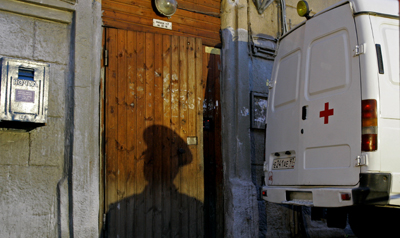Much has been made recently about the digital surveillance of journalists–and rightly so–but physical surveillance remains a key tactic of security forces, law enforcement, and private entities. These operatives are monitoring journalists, gathering intelligence on them, and potentially obstructing journalists’ work or putting them at risk.
Understanding how to detect surveillance can improve your safety in the field and the odds of completing your assignment successfully. As a 10-year veteran of the U.S. Secret Service who now works as a private security analyst and consultant, I’m offering this basic primer on surveillance detection. Be aware, though, that you should speak with your editors and colleagues and seek direct consultation with security experts whenever you believe you are at risk.
Your ability to observe and discern behavior is central to surveillance detection. Be aware of your own actions and routines, and be able to pick up subtle changes and behaviors in others. You can train yourself by watching people in public areas, focusing on their behavior.
Know the routines, culture, and expectations of your environment. Who and what belongs? What doesn’t? At what times do certain activities occur? What kinds of behaviors are normal for this area and time of day? Are people–say the food vendors across the street–really who they seem to be? Does their presence fit in the environment? Establishing a baseline of normal activity and expected behaviors makes surveillance detection easier. More broadly, understand the operations and tolerance levels of local government, police, and military. That will help you understand what to expect, who might take an interest in you, and how they might react.
Remember: What you see is not the same as what you should discern. Your focus must be on behaviors, not stereotypes or expectations. While someone may seem to be doing one thing or engaging in a common, logical activity, what are they actually doing and where is their focus? Are their eyes shifting or focused elsewhere? What are they actually taking an interest in? Individuals may set up close to your location in order to observe your movements. Sometimes they may ask others about your activities; they might even ask you questions directly.
Watch for certain things: Multiple sightings of an individual over time and distance; people who seem out of place in their mannerisms or clothing; individuals pointing cameras in unusual directions; a person talking discreetly on phones or seeming to use an earpiece when you make a move. Discreet observation can be done by using sunglasses and looking into mirrors, glass, and windows. It helps to make notes so you can connect any dots.
These tactics, known as passive surveillance detection, are based on observation. You are picking up possible surveillance without alarming those who might be conducting it. Through the use of more assertive tactics, known as active surveillance detection, you try to elicit a response from those you believe are conducting surveillance in order prove your suspicion.
Be very aware that the use of active detection tactics can incur risk. It may be safer not to let others know you believe you are being watched. Always talk with your editor or colleagues and always try to consult directly with security experts as you assess risk and consider options.
The use of surveillance detection routes is one “active” tactic. Pick routes that have turns, corners, stops, and even out-of-the way detours that enable you to see who might be following. Your movements should be precise and strategic (even illogical at times) in order to expose someone following you. You might decide to let such individuals know you’ve discovered them by watching or taking photos of them. This could cause them to back off or change tactics, but it also brings an element of risk.
Once surveillance is detected, you should consider changing your routines, limiting your exposure, or possibly reporting the activity to trusted local authorities or embassy officials. You may also require the assistance of security professionals. Security may take the form of counter surveillance–that is, having someone monitor those watching you. Consider establishing a form of discreet communication with your contacts that can include code words or signals such as clothing, jewelry or gestures to alert them to the presence of surveillance and to switch to alternate plans. Advance planning helps your decision-making in the field.
Based on the level of risk, you may decide to abort an assignment completely and leave a city or region altogether. If your safety is in doubt, do not hesitate doing so. Those watching you may be at a similar strategic decision point.
